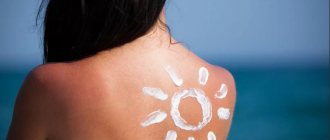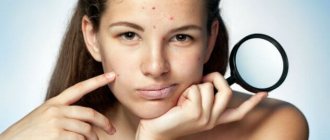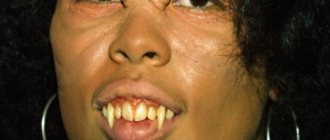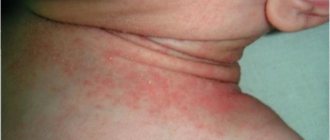Why do some people get a beautiful tan in the sun, while others get itchy blisters and a red rash? Ultraviolet radiation can cause various allergic reactions; they must be distinguished in order to properly treat the disease.
How do solar urticaria and photodermatoses occur and how to treat them? Doctor of Medical Sciences, Professor of the Department of Skin and Venereal Diseases named after V. A. Rakhmanova Sechenov University, PhD (Great Britain) Elena Borzova .
From blisters to shock
Yulia Borta, AiF.ru: Elena Yuryevna, how does solar urticaria appear?
Elena Borzova : Solar urticaria occurs quite quickly, often less than 5 minutes after exposure of the skin to solar radiation. Much less often - within 20 minutes. For example, people with increased sensitivity to solar radiation (photosensitivity) may experience solar urticaria after just a few minutes in the open sun. Itchy blisters appear on the skin. However, solar urticaria resolves quickly, after 15-30 minutes, up to a maximum of 1 hour. But, once it appears, solar urticaria can occur again. Patients with solar urticaria should go out into the open sun, for example, go on a picnic, and an immediate reaction occurs. Mostly solar urticaria occurs on exposed areas of the body. And since solar urticaria is possible as a reaction to various ranges of ultraviolet radiation, in the summer sometimes thin clothing also does not protect against the occurrence of itchy blisters. It is possible for ultraviolet rays to penetrate through window glass indoors or through car windows.
Sometimes there are more severe symptoms: headache, rapid heartbeat, general deterioration in health up to fainting, and in the most severe cases anaphylactic shock is possible. Therefore, such patients should be promptly examined and diagnosed by specialists.
Solar urticaria can occur over a long period of time, chronically. For some, rashes predominate in the spring and summer, while for others they may occur throughout the year. But they are always caused by ultraviolet radiation. In some patients, the disease may resolve on its own, i.e., spontaneous remission is observed.
Scorched by the sun. Nine rules for walking with your child in the summer Read more
— How to distinguish solar urticaria from a sunburn or other types of allergies to sunlight?
— There are various photodermatoses - diseases with skin damage that occur under the influence of ultraviolet radiation. For example, photoallergic contact dermatitis is an inflammatory process of the skin that occurs at sites of combined exposure to a drug or cosmetic product and ultraviolet radiation in individuals with hypersensitivity to these drugs. Unlike solar urticaria, photoallergic contact dermatitis usually occurs over a more delayed period, several hours after intense exposure to ultraviolet radiation. And it takes much longer. A detailed differential diagnosis requires specialist consultation and further examination, including phototesting.
—Who is more likely to have reactions to solar radiation?
- People most often get sick between the ages of 20 and 40. The risk is higher if relatives have had similar reactions to solar radiation or if they are taking certain medications. Overall, this is an understudied area.
— What happens to the body during solar urticaria? Why does this reaction to the sun occur?
— It is assumed that under the influence of solar radiation the structure of some proteins in the skin changes and they become photoallergens. The altered proteins can cause the production of immunoglobulins E, which are found on the surface of mast cells in the skin. As a result of this activation of mast cells, they begin to release histamine and other mediators, which cause the formation of an itchy blister on the skin.
Signal of pathology. The doctor talks about the dangers behind “sun allergy” Read more
When are oranges dangerous?
— I heard that some cosmetics, perfumes, and medications can also provoke reactions to solar radiation.
— Cosmetics and medications can trigger photoallergic contact dermatitis. The most common allergic reactions occur to sunscreens and non-steroidal anti-inflammatory drugs. It can be triggered by a number of drugs in cardiology, for the treatment of diabetes, some diuretics, antibiotics, especially doxycycline, tetracycline, fluoroquinolones, sulfonamides, some oral contraceptives and even some antihistamines. In addition, perfumes based on musk and essential oils, for example, bergamot, orange. Therefore, it is recommended not to use perfume if you plan to sunbathe or visit the beach.
- How so? Sunscreens are designed to protect against the sun, but can cause problems when tanning.
“Some of them really can.” After all, such products are a composition of many ingredients, some of which cause reactions in people with hypersensitivity to these components. Therefore, it is important, if a reaction to photoprotective agents occurs, to consult a specialist, rule out contact dermatitis and choose a safe drug.
By the way, some vegetables and fruits and plants can also cause photoallergic reactions. These are angelica, hogweed, and products include celery, parsley, fennel, figs, and some citrus fruits. Moreover, in people with high sensitivity, even touching the face can cause a reaction if trace amounts remain on the fingertips after contact with, say, celery or parsley.
Photosensitivity can be accompanied by some diseases, such as lupus erythematosus, porphyria and pellagra.
— Is solar urticaria possible in our mid-latitudes or does it only appear in southern resorts?
— Solar urticaria is a rare variant of urticaria, provoked by ultraviolet radiation of various ranges: ultraviolet rays of the A and B spectrum, as well as the visible spectrum. Of course, it is also possible in mid-latitudes. A study was conducted in Scotland that showed that even in northern latitudes the disease, although rare, does occur.
I went to Thailand and brought back cancer? Oncologist about the dangers of the sun and myths about melanoma Read more
Useful video
Watch the video about acne from SPF creams:
Similar articles
- Brown spot after tanning: why it appeared on...
Usually a brown spot is simply excessive pigmentation of the skin. There are several reasons why it appeared on the body, as well as ways to get rid of it. But it is important to see a doctor to rule out cancer. Read more - Sunscreen for problem skin: the best…
A properly selected sunscreen for problem skin will not only provide high-quality protection from harmful rays, but will even help the skin. This emulsion for the face and body will nourish with moisture and at the same time dry. How to choose the best products for problem skin Read more
- The effect of the sun on the skin: how it affects a person, on...
In many ways, the effect of the sun on the skin is positive - vitamin D and serotonin are produced, and the condition improves. But it also has a negative effect on a person, especially on the face, if combined with the wind. Read more
- Solarium for acne: does it help if they are on the back...
It has been proven that solarium really helps with acne, as well as with scars after it. It’s just worth remembering that if they appeared on the back or face not due to clogged pores or other non-dangerous reasons, then artificial tanning can aggravate the situation. Read more
- Sunbathing after mole removal: when can you, how long...
It is believed that you should not sunbathe for the first time after removing a mole. When and after how long is possible is affected by the removal method. For example, if a mole was removed using a laser, then rehabilitation takes from a week to a month. Read more
Selfie for the doctor
— How are solar urticaria and photodermatoses treated?
— If symptoms occur, you should consult a specialist as soon as possible for differential diagnosis. To confirm solar urticaria and other photodermatoses, phototesting is mandatory. Phototesting is used to determine the range of solar radiation that causes the disease. For photoallergic contact dermatitis, photopatch tests are used with drugs that are suspected of causing this reaction.
Many patients come to an allergist-immunologist or dermatologist when they return from vacation, several weeks after the occurrence of an allergic reaction. In such a situation, it is quite difficult to interpret the symptoms. Therefore, it is advisable to photograph changes in the skin if they occur while relaxing on the beach and contact a specialist in a timely manner.
Treatment also has fundamental differences. For urticaria, use non-sedating antihistamines; for chronic cases, more specialized approaches are possible. Phototherapy is successfully carried out in our clinic; it is an effective method and involves exposure to increasing doses of ultraviolet radiation to develop tolerance. With solar urticaria, severe variants are also possible, including systemic reactions of the body, which may require emergency care. In the case of photoallergic contact dermatitis, it is necessary to exclude the culprit photoallergen, and topical glucocorticosteroids and other drugs are used.
Sun safety rules
- Try not to sunbathe during the most active solar radiation, from 10-11 to 16 hours.
- Before going to the beach, it is advisable not to use deodorants, creams, or perfumes.
- Be sure to use sunscreens with a high protection factor.
- Before sunbathing, avoid foods that may cause photoallergic reactions.
- If possible, wear clothing that protects from active solar radiation. If a person is confirmed to have solar urticaria, they are advised to avoid exposure to sunlight and wear clothing and hats that protect from sunlight.
- If skin manifestations occur, contact a specialist.
What is a solarium
Solariums use ultraviolet lamps, which accelerate the process of melanin production, which paints the body a chocolate-colored skin tone. Compared to the sun, solarium lamps are several times more intense, which allows you to get a tan in a short period of time. It is enough to visit the solarium twice a week to get a chocolate or bronze skin tone.
The main advantage of a solarium is that you can sunbathe at any time of the year, regardless of solar activity. Solarium, just like the sun, in moderation, can treat skin diseases, such as acne or psoriasis.










